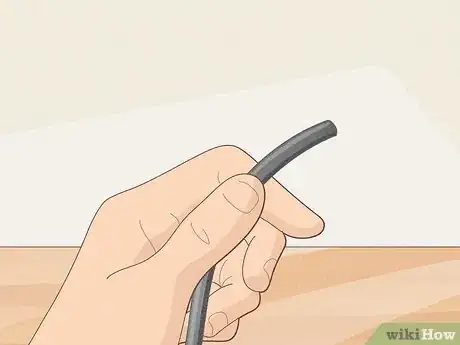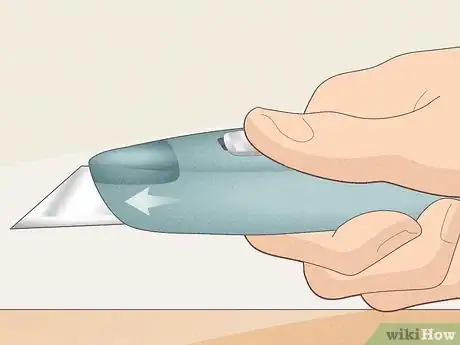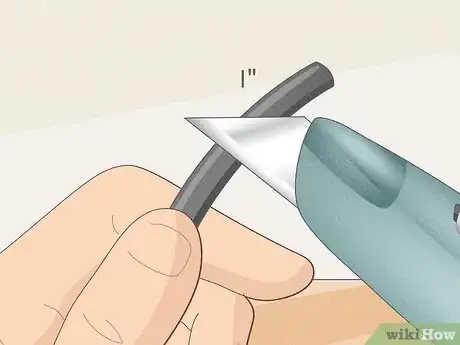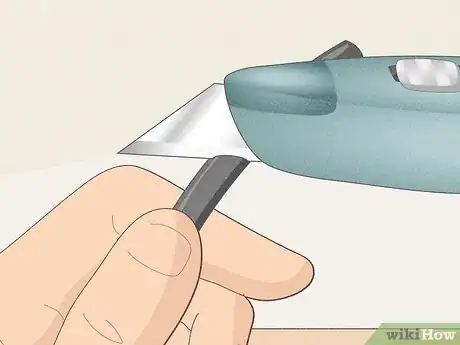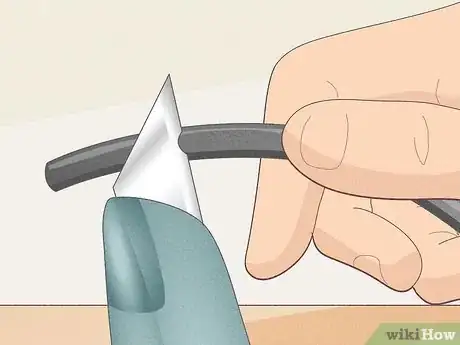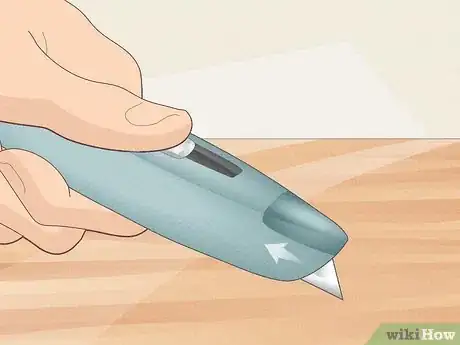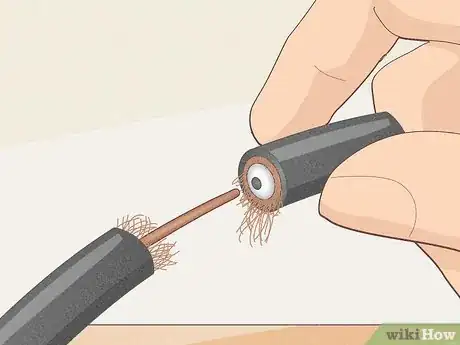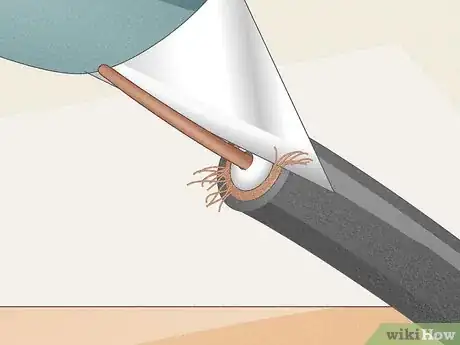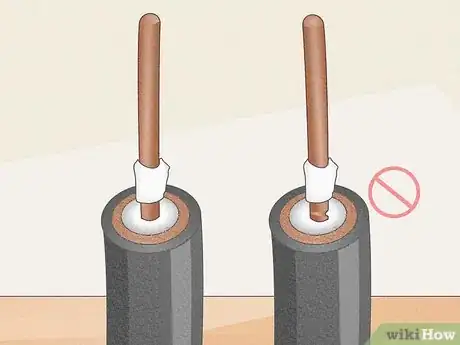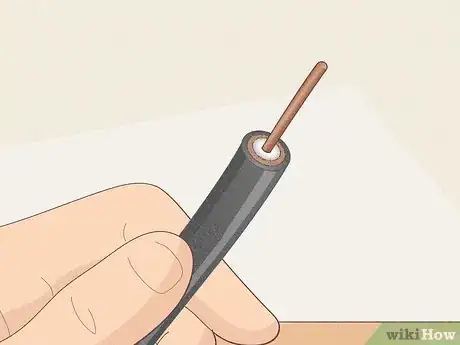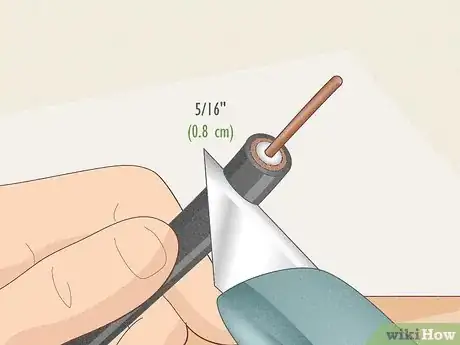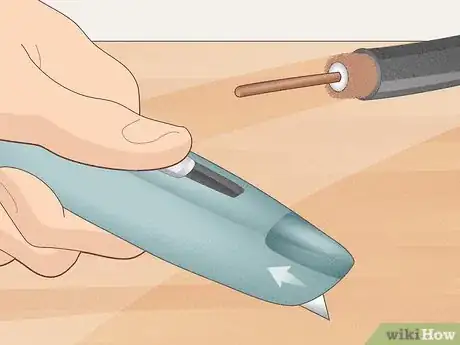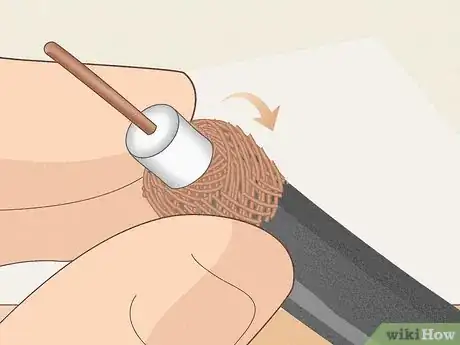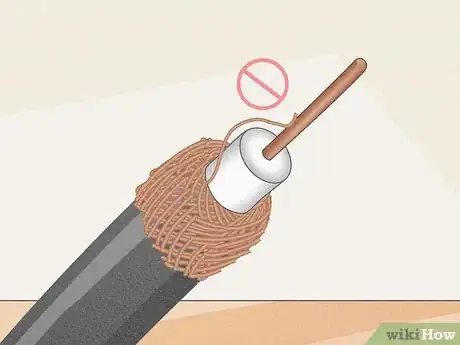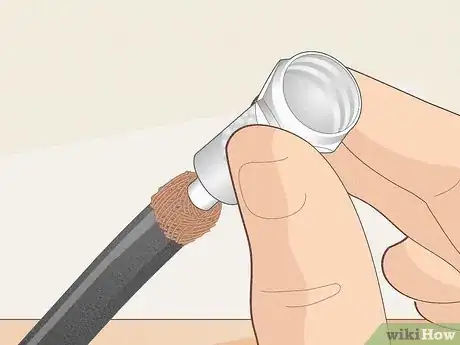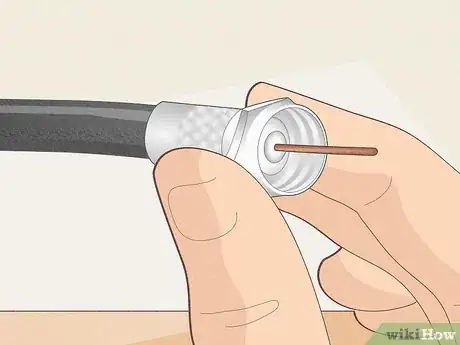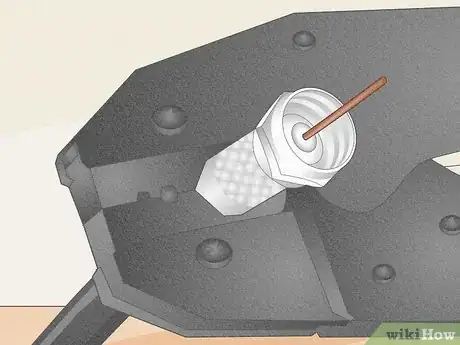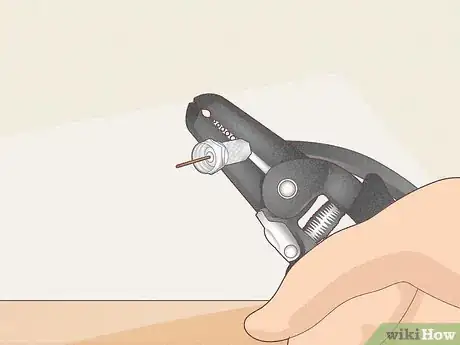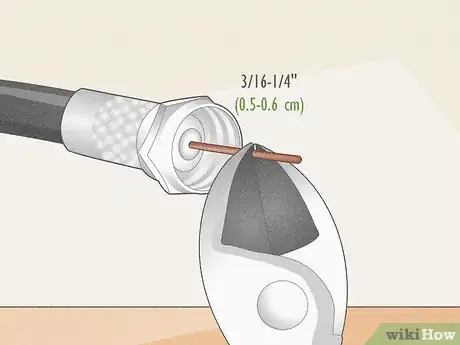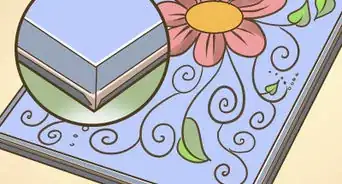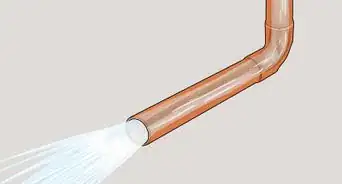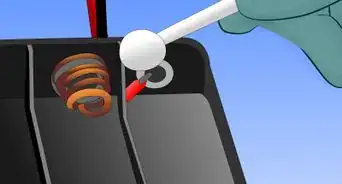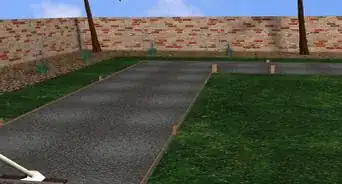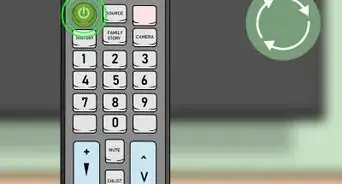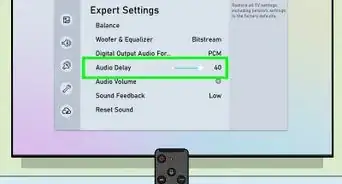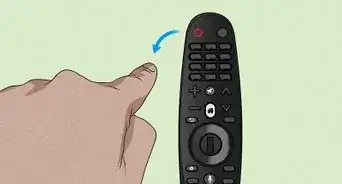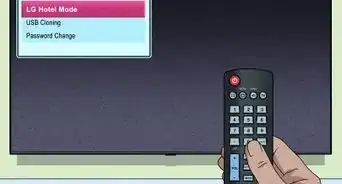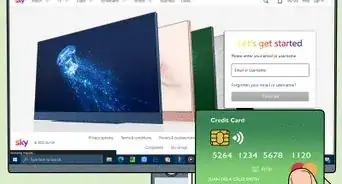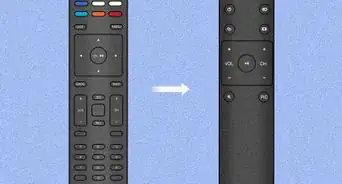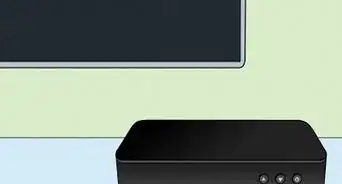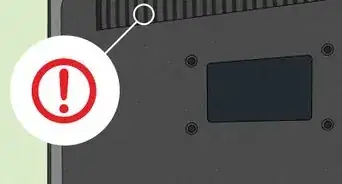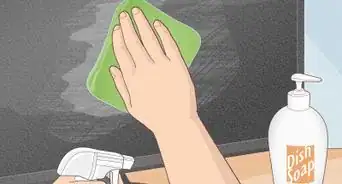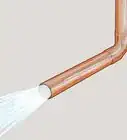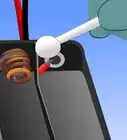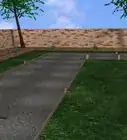X
wikiHow is a “wiki,” similar to Wikipedia, which means that many of our articles are co-written by multiple authors. To create this article, volunteer authors worked to edit and improve it over time.
This article has been viewed 261,467 times.
Learn more...
Stripping coax (short for coaxial) cable is not very difficult, and can be mastered with a little practice. While tools designed specifically for this purpose are available for relatively little cost, this wiki will explain how to strip RG6 coax (a very popular cable and satellite TV cable) with a common razor knife and cutters to prepare for a typical "F" (cable or satellite TV) connector.
Steps
-
1Hold the cable in one hand (as if it were a stick to be whittled), with the end to be stripped pointed away from your body.
-
2Hold the razor knife in your dominant hand and extend the blade if not done so already.Advertisement
-
3Firmly press the edge of the blade (not the point) into the cable at a right angle (perpendicular to the cable) about an inch from the end. The object of this cut is to cut through the outer jacket, layers of foil and / or braids and finally the dielectric foam (usually white in color) that surrounds the center conductor. There will be some opposition to the blade as it sinks deeper into the cable. When the blade approaches the halfway point through the cable, ease up on the pressure of the blade. This will occur when the blade has reached the center conductor of the cable, which is at the halfway point through the cable. It is very important to not damage this center conductor by nicking it with the blade.
-
4Run the blade halfway around the cable by rotating the tool around the cable. Do not allow the blade to nick the center conductor as you continue to cut around the center conductor.
-
5Reposition the cable as needed in the other hand, so that the blade can easily continue to be rotated around the cable to continue the cut, while still being held in a comfortable position.
-
6Return the blade to the storage position in the tool and put the tool down. Grasp the the cable between the end and the fresh cut. Firmly pull the end off of the cable while twisting the end back and forth.
-
7Discard the cable end and pick up any stray wires from the "metallic shield" or braid.
-
8Cut off any braid wires that extend beyond the jacket so that they are flush with the jacket with the knife or wire cutters.
-
9Carefully inspect the center conductor for nicks. If it is nicked, it will be required to repeat the above steps until you are able to perform the steps without damaging the center conductor. It may take 6, 10 or more attempts before it can be done successfully if never attempted before.
-
10Remove any film or dielectric foam remaining from the length of the center conductor (if present) by gently scraping the center conductor with fingernail. Be sure the center conductor is clean all the way around over it's entire length.
-
11Hold the cable again as earlier to prepare for removal of the outer jacket. There are different types of "F" connectors and ways to attach them to the cable. Most common "F" connectors can be attached to cables prepared with the dimensions used here and should be used unless the connectors you are using specifies a different dimension.
-
12Hold the razor as before, aligning the the blade on the jacket about 5⁄16 inch (0.8 cm) back from the cut made in the previous step. The purpose of this cut is to penetrate the jacket only, and leave the braid intact. The cut will be perpendicular to the cable like the first cut. Many "F" connectors specify that the braid not be removed, while others prefer it removed. Plan to leave it in place for now, as it can be removed later, if needed. The braids are woven around the length of the dielectric foam, and lie just beneath the outer jacket. The individual wires that make up the braid are thinner than a hair, and are easily cut. Gently press the blade into the jacket and run it around the cable, in the same manner as was done in the first cut to the center conductor. Once the blade has cut around the circumference of the jacket, press the tip of the blade against the jacket at this cut and gently cut towards the end of the cable. Again, try not to cut the braid.
-
13Return the blade to the storage position in the tool and put the tool down. Peel the 5⁄16 inch (0.8 cm) jacket off of the cable, leaving only the braid covering the dielectric.
-
14Fold the braid back, over the outer jacket. This should expose the dielectric, which surrounds the center conductor. There is no concern if some of the braid wires were cut. Check the requirements (if any) of the "F" connector you will place on the end of the cable.
-
15Inspect the cable end. It is very important that there are no wires, filings or other conductive bits between the center conductor and the braid. The white dielectric should show anything that bridges these two parts easily. Remove anything found.
-
16Place the "F" connector on the end of the cable. Make one final inspection by looking into the connector. Make sure that no conductive debris is between the center conductor and the "F" connector before securing to the cable.
-
17The "F" connector is fully seated on the cable if the dielectric is flush with the "bottom" of the connector, when viewed from the end - looking in. It should not extend beyond or be recessed more than 1⁄16 inch (0.2 cm) from the bottom of the connector. Under no circumstances should the center conductor be in contact with the "F" connector.
-
18Secure the the "F" connector to the cable only with the tool designed for the connector.
- Coax compression connector tool
- Coax connector crimping tool
-
19Inexpensive crimping type tool.
-
20Cut the center conductor so that it extends beyond the "F" connector 3⁄16 to 1⁄4 inch (0.5 to 0.6 cm).
Advertisement
Warnings
- Do not attempt to hold the cable by mechanical means such as a vise. Coax is rugged, but can fail when crushed or bent at sharp angles. The "rule of thumb" for bending cables is the radius of the bend should be no less than 4 times the cable diameter.⧼thumbs_response⧽
- Use extreme caution working with the razor knife, for obvious reasons. The work is small scale, and it can be difficult to hold all the parts comfortably.⧼thumbs_response⧽
Advertisement
Things You'll Need
- Razor knife (or equal)
- Wire cutters
About This Article
Advertisement
